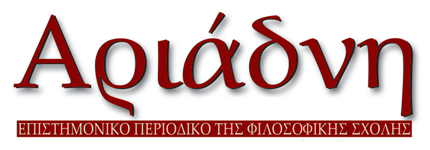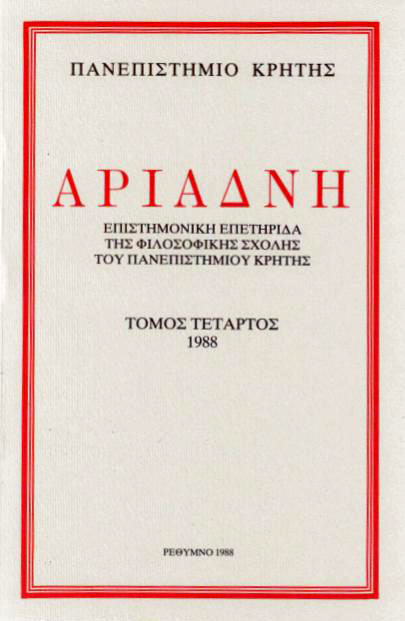Imperium floret. Η εποχή του Σεπτιμίου Σεβίρου και το έργο του Q. Curtius Rufus
DOI:
https://doi.org/10.26248/ariadne.v4i0.1136Περίληψη
The old dating problem of Q. Curtius Rufus' «Historiae Alexandri...» is re-examined. In the famous digression of the tenth book (9.1-6) a basic pattern, common to the phase of the Diadochoi struggle described just before and the author's recent Roman past, consists in the initial, formal division of imperial power and the eventual outbreak of an ominous civil war, fortunately ended in the case of Rome only through the establischment of a new emperor's rule. The last feature (real civil war) allows but two possibilities for Curtius' time and glorified emperor: Vespasian and Septimius Severus. The first feature (division of power) can correspond only to an element of Severus' way to sole rule: the temporary arrangement with Clodius Albinus, named Caesar (193) and so remaining neutral in Severus' war against Pescennius Niger. This observation is in line with a series of indications in and about Gurtius' work, also suggesting and cumulatively able to prove a date about 205 for it.
The indications are: the figure of a Roman empire qlooming again (after the suppression of civil strife), used by Curtius and also found in Tertullian; the actuality of Parthian danger; the special reference to the vicissitudes of the whole (remote and recent) Tyrian past and the happy present of the city (IV.4.19-21); the hint at a new saeculum and the invidia menacing the longevity of the new dynasty; the actuality of Alexander's image in the early Severan period; the legal equality of imperial subjects presented as an element of Alexander s political programme (Χ.3.14) ; the comparison of the ruling Roman emperor with a novum sidus, seen in connection with Cass. Dio 74.14.3 - 5.
Λήψεις
Δημοσίευση
Πώς να δημιουργήσετε Αναφορές
Τεύχος
Ενότητα
Άδεια
Οι εργασίες που δημοσιεύονται στο περιοδικό μπορούν να χρησιμοποιηθούν ελεύθερα για μη-εμπορικούς σκοπούς με την προϋπόθεση ότι γίνεται αναφορά στους συγγραφείς και την πρώτη δημοσίευση. Στην περίπτωση που το άρθρο αλλοιωθεί, τροποποιηθεί ή δημιουργηθεί κάτι νέο βασισμένο στο αρχικό, το έργο που θα προκύψει θα μπορεί να διανεμηθεί μόνο με την ίδια ή παρόμοια άδεια (Creative Commons Attribution-NonCommercial-ShareAlike 4.0 International License).


